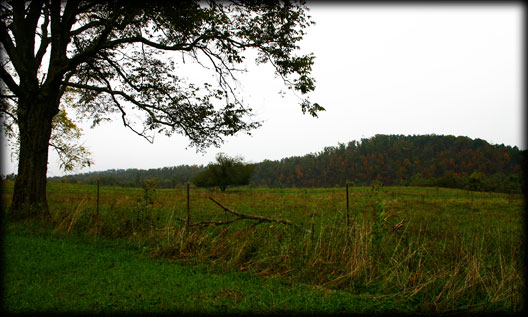
plate 1. The War Eagle River Valley.
Paintin’ On Feathers
by Joshua Heston
My first introduction to Arkansas-based artist Pamela Kelley came last fall during the hustle and bustle of the War Eagle Craft Fair.
In the midst of thousands of crafts and arts, Kelley’s work stood out — not because it was painted on turkey feathers (which is, incidentally, quite attention-getting) but because of its precision and extraordinary quality.
Kelley understands her medium and her subjects.
In her pieces, the morning light plays delicately over the muscles of a deer or elk. Tom turkeys strut and yellow pine needles all but rustle in the breeze.
Kelley’s expertise is born of experience. She is self-taught. She never took a sculpture class, much less a painting class. A true Ozarker, Pamela Kelley fell in love with the wilderness (as well as with hunting) years ago. It is a love that has taken her a fair distance already.
She has been artist-in-residence at Yellowstone National Park. She has worked with Pheasants Forever, the Mule Deer Foundation, Rocky Mountain Elk Foundation and Quail Unlimited.
Some of her first works, presented to Bass Pro in Springfield, sold out within the week. A gracious, direct woman, Pamela Kelley is an artist contributing, not only to conservation and the arts community, but to the Ozarks culture itself.
It was an honor to interview her earlier this year.
Kelley’s story, in her own words, is below...
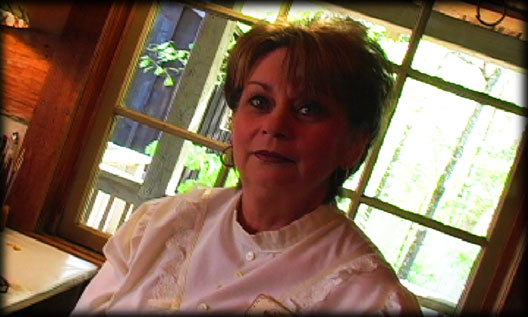
plate 2. Pamela Kelley.
How did you get started?
Well, I had wanted to paint. I had always been mother, wife, and before that even, worked in a shirt factory on an assembly line. But my husband bought me a little starter kit at Wal-Mart. And he was determined that I was going to try this.
The starter kit cost $24.95. I thought that was extravagant at the time. It was extravagant at the time because we really didn’t have a lot of extra money. So I put it back on the shelf. And he promptly got that starter kit and he put it back in the shopping buggy and he told me, “There’s your paint. Let’s see what you can do with it.”
That’s what started it all.
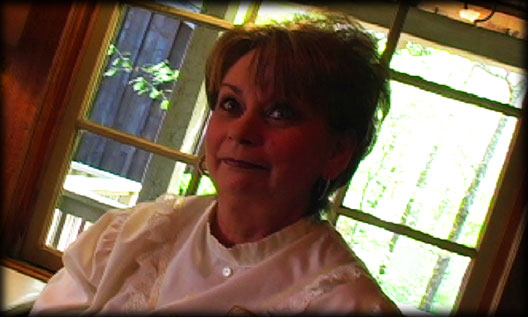
plate 3.
What prompted you to start painting wildlife?
That is just me. That's what I preferred. Even though I have the fixed hair style and — I call it war paint — the makeup, and the earrings, and these things... Even though I am this person — still, yet! — I have been a deer hunter since I was 16.
I started going deer hunting when me and the husband were dating. And I wasn’t just out there to tag along.
I had my gun and I’m not one that just up and shoots at everything they see. But if I felt really certain that the animal was going to go home with me, then the animal went home with me!
So, I’ve been a hunter. Another thing is I just love nature.
I can see beauty — my favorite season is the winter. I’m not that great a fan of the summer — the leafed-out trees and everything. That doesn’t thrill me.
But it does thrill me to see the gnarled, bleak limbs on the trees.
And the tree trunks. And to me, that's beautiful. And it’s beautiful to see the brown leaves out in the woodland. I don’t have to have a manicured flower bed to enjoy nature. I mean, manicured flower beds are beautiful, but to me that’s not quite so much nature.
Wildlife just fits into my life. We have a log home. When we built the log home we made the decision we did not want a yard. The leaves and the trees come right up the front and back porch. And that’s what we'd prefer. We didn't cut trees that didn't have to be cut to live up there. That doesn't mean I'm necessarily a tree hugger.
It’s just the atmosphere I wanted to live in.
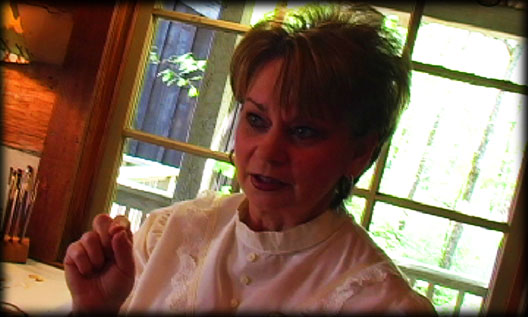
plate 4.
How do you work with feathers?
Well, I groom the feathers with an artist’s fan brush. I usually take a piece of scrap matte (cut it about four inches tall) which I attach to my work surface.
I will lay a line of glue right up the vein of the feather. If you’re doing a multi-feather piece you’ve got to have some stationary structure to your piece in order to go from feather to feather to lay the paint on and get your piece going.
I try to leave the feather as natural as possible because it is a piece of nature.
Each feather artist has their own techniques. I did not have anyone who gave me clues as to what I should and shouldn’t do. It was a definite learning curve and I had to learn what worked for me. A lot of folks will go and take a painting class and I am not against that at all.
If that is their preference then that’s what they need to do for themselves. For me, it just wasn’t what fit.
For me.
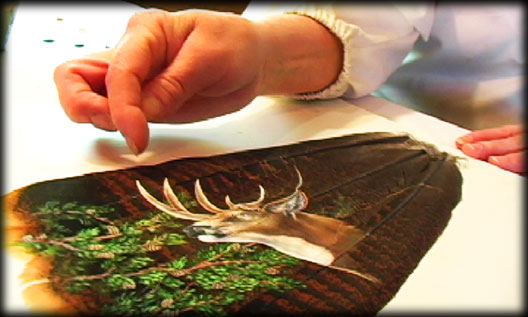
plate 5.
On the feathers I have learned that if you're trying to get a line — such as you really need to get a curve line going there for the antler — and you're working here where you have the raw feather (and you have no background) then you don't have the opportunity to go back and re-do those things should you mess up.
So I have learnt to thin my oil paint. And I use brush cleaner to do that with. There’s no sense in making it more complicated than it should be.
I have learned to thin it to the consistency of a flour gravy. It’s not runny but it does have some substance to it. That way it will glide across the feather more evenly so that you can make some of those turns. Now, in doing this, I find — still yet — that I have to turn the piece. Sometimes it’s absolutely necessary to turn it in the direction that you’re needing the brush to go in order to get that flow in there.
And for this deer’s body, I want the head to be more prominent — the head and the neck and of course the rack. But it’s my own technique. I like for the animal to fade out as it comes to the edge of the feather.
I prefer to fade that out because you want to see that you’re still working on that feather. You want the beauty of the feather to show up too because that's part of the whole art project.
And there is a lot of colors in that feather. People that haven’t paid attention before should see it. You can put a feather in the sunlight and you never dreamed that you could see so many different iridescent colors in that feather. You’re going to see teal greens and coppers. You’re going to see red. You can even see purple if you get that feather in the right position in the sunlight.
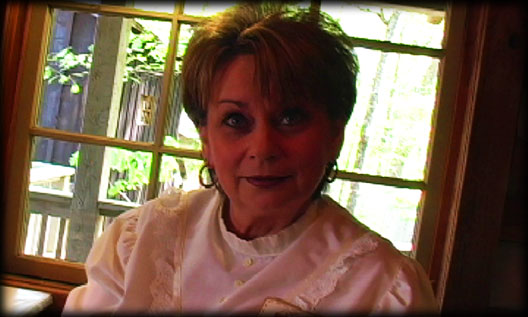
plate 6.
What do the Ozarks mean to you?
Up to this point, the Ozarks are — they stand for — a wholesome way of life. They stand for quality of life. You can still live here and not be so frightened as in other parts of the country.
The Ozarks are part of the Bible Belt and I’m proud of that. I hope it continues this way. Change is good in a lot of instances. But all change is not good. I hope the Ozarks stand for quality family: where you can raise a family and your children have good standards and good morals and you can still attend the church. Here, you can live in the country if you want to. You may have to travel just a little bit. But just because you live in the country and just because you live in the Ozarks does not mean that you have to limit yourself as far as a career.
My art has traveled nationwide with the Bass Pro Stores and Cabela’s and you can reach those goals. You can travel. You have to not be scared to put yourself out there. And promote yourself. And a lot of folks don’t understand that it is risky. You are taking a risk. But you’ll find if you do it — a lot of times — it will be rewarding. That’s what the Ozarks are for me.
April 16, , 2010




